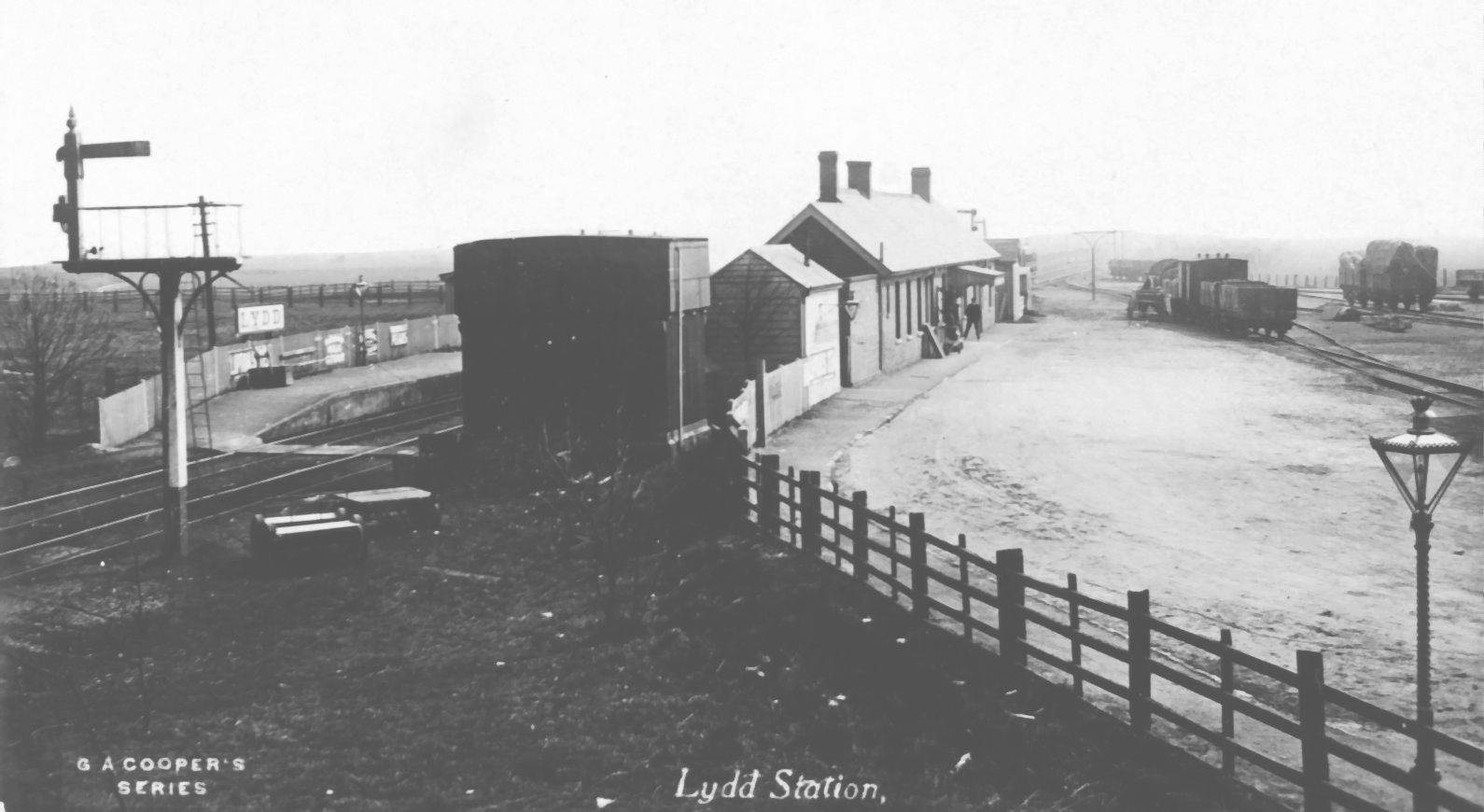
|
Lydd Branch 1881 - 1967 |
Ken Elks Copyright © 2002
The Lydd Branch of the South Eastern Railway was promoted with the ambitious notion of developing a new seaport for cross-channel services which, in the event, never materialised. The line was to connect the remote foreland of Dungeness on the Channel coast with the Ashford-Rye mainline at Appledore via the Cinque Port town of Lydd, with a further branch extending to New Romney along the coast to the north.
The line opened between Appledore and Lydd on 7 December 1881, together with freight services to Dungeness, the latter not opening for passengers until 1 April 1883. The only intermediate station was at Brookland. A feature of the branch was the large number of level crossings for such a short line (circa 8 miles), no less than 12 in total. Meanwhile the New Romney branch had been authorised and this was brought into service on 19 June 1884. Working the branch thereafter was complicated by the need for some trains to reverse at Lydd to go to both the stations at New Romney and Dungeness, thus stopping at Lydd twice. Typical of this was the 11.08 am train from Appledore which stopped at Lydd on the way to New Romney, arriving there at 11.34, then returning to Lydd, reversing to go to Dungeness, finally arriving at 12.04. On the return service at 12.20 there was another reversal at Lydd to go to New Romney again, arriving at 12.37, then back to Lydd and on to Appledore, arriving at 1.05 pm. The process was greatly simplified when push-pull trains were introduced.
The mainstay of the line was military traffic to the army camp and gunnery ranges set up south of Lydd, with the remainder mostly farm goods and livestock, particularly the transport of Romney Marsh sheep. Prior to the First World War (1914-18) the branch was relatively prosperous but thereafter began a steady decline. During 1906-7 Kitson steam rail cars were introduced experimentally, which were also used on the South Eastern & Chatham's Railway's Chatham Central Branch and the Sheppey Light Railway. In further experiments in the 1930's a four-wheeled petrol-engined Drewry railcar saw extensive use and also the small French "Micheline" which ran on flanged wheels with rubber tyres. At the same time the Southern Railway, who inherited the SECR's lines, began to make more economies. These included destaffing Brookland station, removing the passing loop and selling off the station building.
In 1937 the Southern Railway sought to improve the New Romney branch, hoping to take advantage of the developing holiday homes in the area. Accordingly the original alignment was abandoned and a new junction made, closer to Dungeness, and looping back along the coast to rejoin the old line near New Romney. Two new stations were built, Lydd-on-Sea and Greatstone-on-Sea, both unmanned halts. The new line came into service on 4 July 1937. At the same time the station at Lydd was renamed Lydd Town and passenger services to Dungeness ceased, though freight continued in operation until 1963.
During the Second World War there was a notable incident on 27 November 1942 when a train hauled by an ex-LBSCR D3 class locomotive and driven by Charles Gilbert from Ashford was attacked by a low-flying German fighter aircraft. A burst of cannon fire from the Focke-Wulf 190 caused the engine boiler to burst just as the plane, only 20 feet above the ground, passed over the top. The explosion caused the plane to crash and the pilot was killed. The train and driver survived, the engine being completely rebuilt and back in service on 11 March 1943.
After the war traffic continued to decline and in 1962 British Railways replaced the steam hauled trains with two-car diesel-electrics. Goods services to New Romney ceased in 1964. The line was a prime candidate for closure under the Beeching "Axe" and despite appeals the last passenger trains ran on 6 March 1967. Goods services to Lydd continued until 1971, but the line was still in use for the removal of ballast aggregates and by the nuclear power station, Dungeness B to transport nuclear waste. The level crossings are now unmanned, operated by train crews, and all the surplus track removed. Today, the line through Lydd to the power station loading site is still in situ, as are the station buildings at Brookland and Lydd itself, both in private hands.

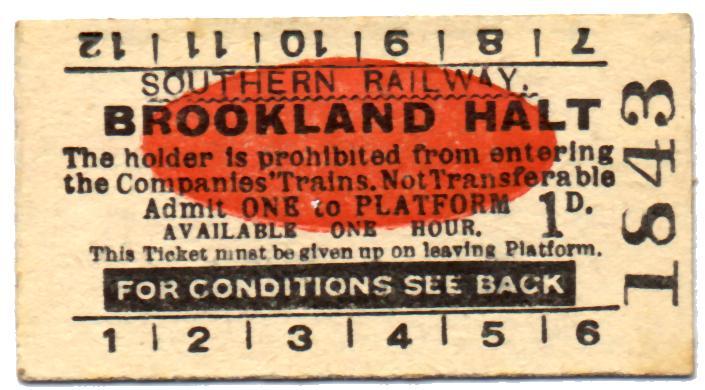
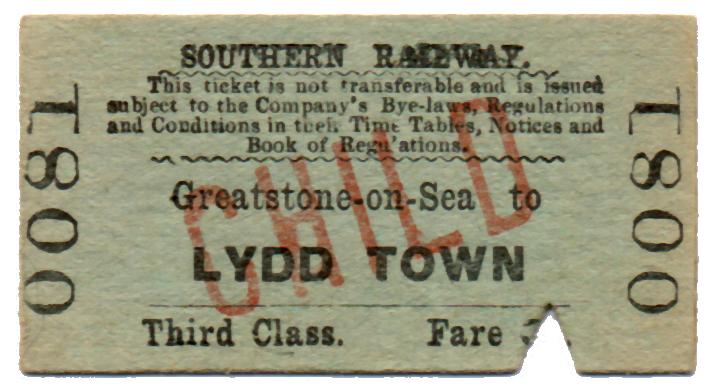
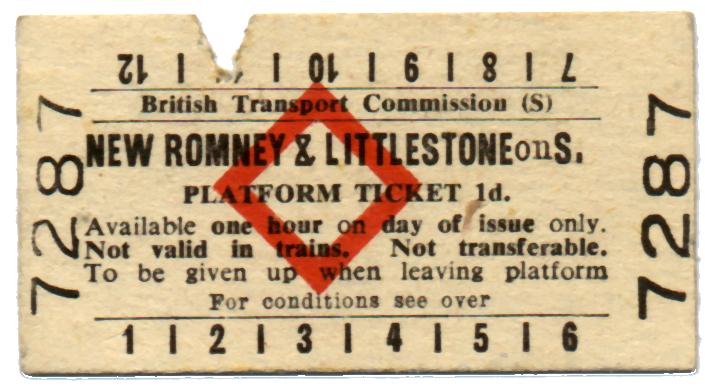
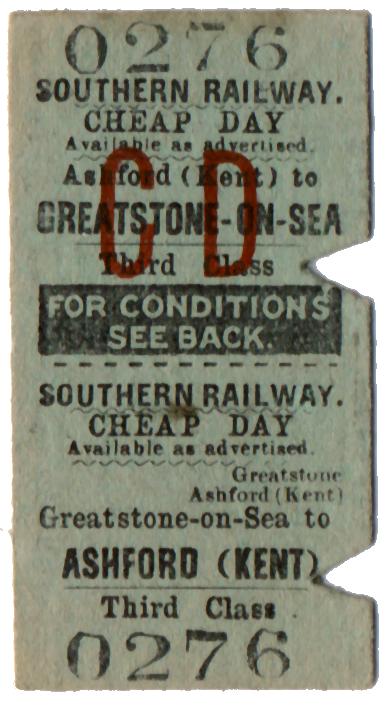
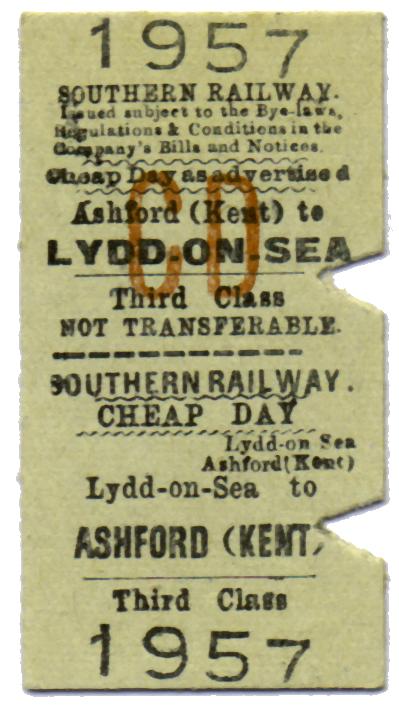
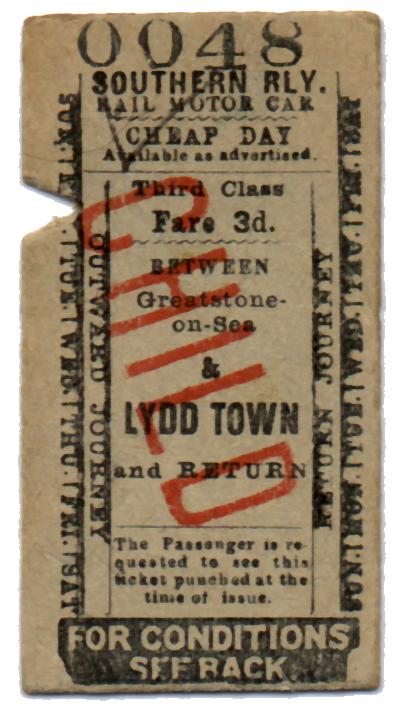
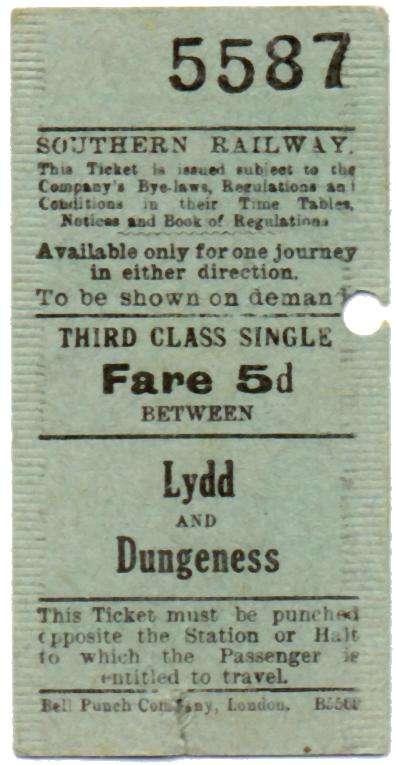
Further reading:
"The New Romney Branch Line" by Peter Harding, published 1983
Mossgiel, Bagshot Road, Knaphill, Woking, Surrey
"Branch Lines of the Southern Railway Vol.2" by George Reeve and Chris Hawkins,
published 1983 by Wild Swan Publications Ltd, ISBN 0 906867 14 2
|
AVAILABLE NOW East Kent Railway Tickets 1916-1948 by Ken Elks. 71pp colour, listing all known surviving tickets with dates of issue. Price £10, post paid. |